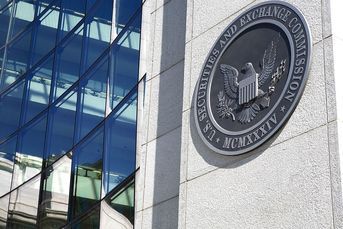Steward Partners expanding roster of RIA custodians

Opening its own broker-dealer gives the firm room to recruit advisers who don't hold RIA assets at Raymond James.
Eyeing fresh recruits, some of the largest RIAs continue to reshuffle their lineups of custodians that hold client assets for registered investment advisers, with Steward Partners Investment Advisory the latest to do so.
Steward Partners, with $15 billion in client assets, has been one of the fastest-growing groups for breakaway brokers in the past decade and has had an exclusive agreement with Raymond James’ custody and brokerage units.
That’s changing as Steward looks to recruit advisers who hold client assets at other custodians. The firm says it will identify new custodians in the next few months.
But that doesn’t mean Steward Partners and Raymond James are breaking up their partnership, according to executives at both firms. Jim Gold left Morgan Stanley in 2013, registered with Raymond James Financial Services Inc. and then in 2016 opened Steward Partners as a separate RIA.
Until now, Steward Partners has had an exclusive agreement with Raymond James for its various business channels for advisers, from employee to independent contractor to RIA.
Last September, Steward Partners said it was acquiring $3.4 billion in assets from Umpqua Holdings Corp., which included a broker-dealer.
The firm fits the pattern of large branch offices of so-called hybrid firms, those that do both RIA fee business and broker-dealer commission business, starting their own broker-dealers, Scott Curtis, president of Raymond James’ private client group, said in an interview Friday morning.
For example, in 2018, Independent Financial Partners, a hybrid like Steward Partners, said it was breaking ties with LPL to launch its own brokerage, IFP Securities.
“When some of these large branches or super [offices of supervisory jurisdiction] get to a certain scale, they can keep working with an independent broker-dealer or start their own,” Curtis said. “They control a piece of the equity ownership and then offer multi-custodians, which helps buying other firms.”
Steward Partners “wants the flexibility and freedom to acquire advisers with other custodians,” Curtis said. “If they remain at Raymond James Financial Services, we don’t permit custody at others, like Schwab and Fidelity.”
“We’ve talked to advisers who say they are interested in Raymond James for custody, but they may have just moved clients’ RIA assets to a new custodian and want to stay there,” Gold said. “We see our growth with Raymond James continuing; we’ve been together since the beginning of Steward Partners.”
Gold said the Steward Partners enterprise had combined RIA and brokerage assets of $22 billion, with about 70% in RIA accounts that charge fees.
Steward Partners isn’t the only hybrid looking for new avenues to recruit and buy advisers.
LPL Financial’s largest branch office, Private Advisor Group in Morristown, New Jersey, recently launched its own broker-dealer with the intention of putting the $29.6 billion RIA in a better position to grab referrals of advisers from custodians who work with registered investment advisers reluctant to be affiliated with LPL.
Learn more about reprints and licensing for this article.








